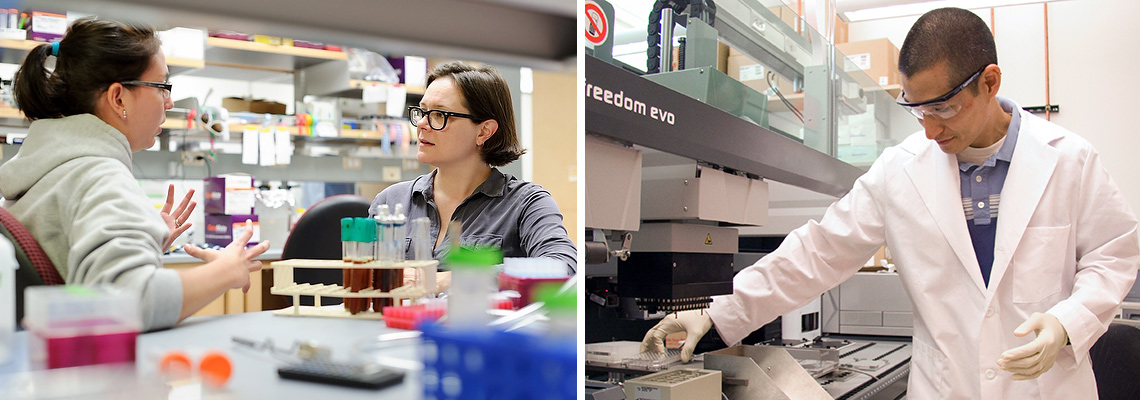
Yeast, the same microbe that gives us bread, beer, and wine, can also convert sugar molecules found in plants into ethanol.
But just as toddlers can be picky eaters, so can yeast: it only eats sugar if it has exactly six carbon molecules. One molecule less and consuming it is out of the question.
“It doesn’t seem like one less carbon molecule should be a big deal,” Audrey Gasch says, “but to the yeast, it is.”
Gasch, a genetics professor at the University of Wisconsin–Madison and researcher at the Great Lakes Bioenergy Research Center (GLBRC), studies the chemical conversion of cellulosic – or non-food – biomass into ethanol and other biofuels. Recently, she and her colleague Trey Sato have focused on engineering a yeast strain that produces more ethanol from corn stover, the corn stalks, leaves, husks and cobs that remain in fields after the harvest.
Gasch and Sato have accomplished this by coaxing yeast to consume xylose, the five-carbon sugar molecule for which it lost its appetite a long time ago.
Both types of sugar, xylose and its six-carbon cousin glucose, are found in the cell walls of corn stover. About 40% of that biomass is cellulose, composed of long chains of glucose molecules; another 30% is hemicellulose, most of which consists of xylose molecules. Every twenty grams of successfully fermented xylose produce an extra ten grams of ethanol.
To get yeast to eat something it won’t touch in nature, Gasch and Sato first had to turn back the evolutionary clock.
“Millions of years ago, yeast was able to metabolize xylose,” Sato explains. “But when today’s most common yeast strain discovered rotten fruit as a new ecological niche, it specialized in one major food source – glucose and similar sugars – and lost its ability to consume xylose.”
Sato and Gasch have re-introduced this ability into the present-day strain by challenging a set of wild yeast cells to survive in an environment where xylose is the only carbon source.
“There’s essentially zero growth of the colony initially,” Gasch says. “But when we add just a little bit of sugar, they start to make mutations, just as they would in nature. Eventually, one of those genetic changes will allow a particular mutant to use the xylose.”
That mutant will continue to multiply while other cells die off, and eventually acquires additional changes that allow for more efficient xylose consumption. After many months of patiently waiting for the optimal set of mutations to take over the colony, the researchers obtained a new, xylose-eating yeast strain whose genome they compared to the original.
“We found four mutations that are of crucial importance to xylose metabolism,” Sato says. “But the real ‘Aha!’ moment came when we re-engineered those mutations back into the original strain and were able to reconstruct a xylose-metabolizing strain from the ground up. We named that strain Y128.”
Next, Gasch and Sato needed to ensure that Y128 would do its job well in the presence of environmental stressors, in this case the toxic chemicals used in pre-treating corn stover before its conversion into biofuel.
By mating Y128 with wild yeast strains that had already developed a greater toxin tolerance in nature, the researchers determined the exact set of genes they needed to engineer into their final result: a stress-tolerant, xylose-consuming yeast strain, which GLBRC’s industrial partners will now optimize for large-scale ethanol production.
“The combination of learning from nature, performing directed laboratory evolution, and genetically engineering specific properties into the strain is a very unique GLBRC approach,” Gasch says. “It’s been incredibly productive.”
The GLBRC is one of three Department of Energy Bioenergy Research Centers created to make transformational breakthroughs that will form the foundation of new cellulosic biofuels technology. For more information on GLBRC technologies, including the Y128 strain, please contact licensing@warf.org.